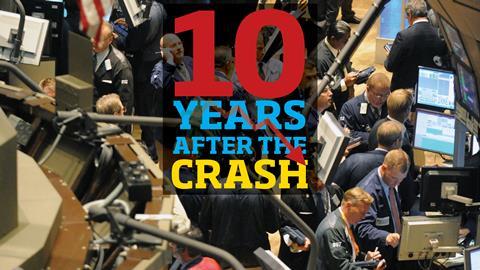The recent 10-year anniversary of Lehman Brothers’ collapse prompted a range of reflective articles – including in this publication – looking at this event’s significance as one of the first major manifestations of the global financial crisis and the start of a particularly testing time of instability.

Property has always been cyclical. The financial crisis was preceded by a period of high growth and high confidence that simply could not have lasted as it was largely driven by debt. With history having a habit of repeating itself, we have to ask where we are now in the cycle and what the risks to global economies might be.
A recent report from Capital Economics suggests that world GDP growth is peaking in this cycle and will slow relatively sharply in 2019-20. It highlights that monetary policy tightening has historically been one of the most common causes of recessions in the G7 economies and anticipates a slowdown led by the US, where higher interest rates will begin to weigh on rate-sensitive sectors of the economy, and China, which is undergoing a structural slowdown.
It is rare for a downturn to be caused by just one factor, however, and many other potential concerns exist: political uncertainty in the UK and strained relationships across Europe, debt ratios in China and Italy and a growing trend for trade protectionism in many economies are just a few examples.
However, we are not at code red yet.
A lot has changed in the decade since Lehman Brothers. We are now in a position where hedge funds and private capital are taking on more risky investments and the banks are taking a more measured and appropriate approach.

Find out more - Lehman Brothers a decade on
Further, while prime yields are lower than they were before the crisis and interest rates in the UK and the US are starting to rise, albeit slowly, the cycle is not even. The European Central Bank (ECB) is still tapering its quantitative easing programme and while unemployment rates remain relatively high and memories of the ill effects of the last time the ECB prematurely raised rates in 2010 remain fresh, there is caution around raising rates within the EU.
Another distinction between the market today and in the lead-up to the global financial crisis is that property acquisitions are not as highly leveraged. Rather than being fuelled by debt, property transactions have largely been driven by equity flows searching for yield. The implication is that a property downturn today would probably be less severe than last time, and less likely to have wider ramifications for the financial sector.
So, while a downturn may be coming, there is still value to be found for those who take a cautious approach, factor in the risks and know where to look. We hear much discussion of macro uncertainty and the need for clarity, but to wait for the ideal moment to invest is to miss it entirely. The most significant returns will always be accrued by those who find them in a challenging environment.
It is important to read the market carefully and see where excessive demand has created a bubble and where meaningful returns can be generated. At Patron, we tend not to focus on the stable prime investments that are enjoying historic if unsustainable highs. Instead, we look for less obvious assets and submarkets where there is less competition, where yield has not been flattened due to increased liquidity driving values upwards, and where potential for growth through repositioning and creativity exists.
As we approach the end of the cycle and face increasing uncertainty, for many the focus will be sheltering from the storm; for us, it will be time to venture into it.






























No comments yet